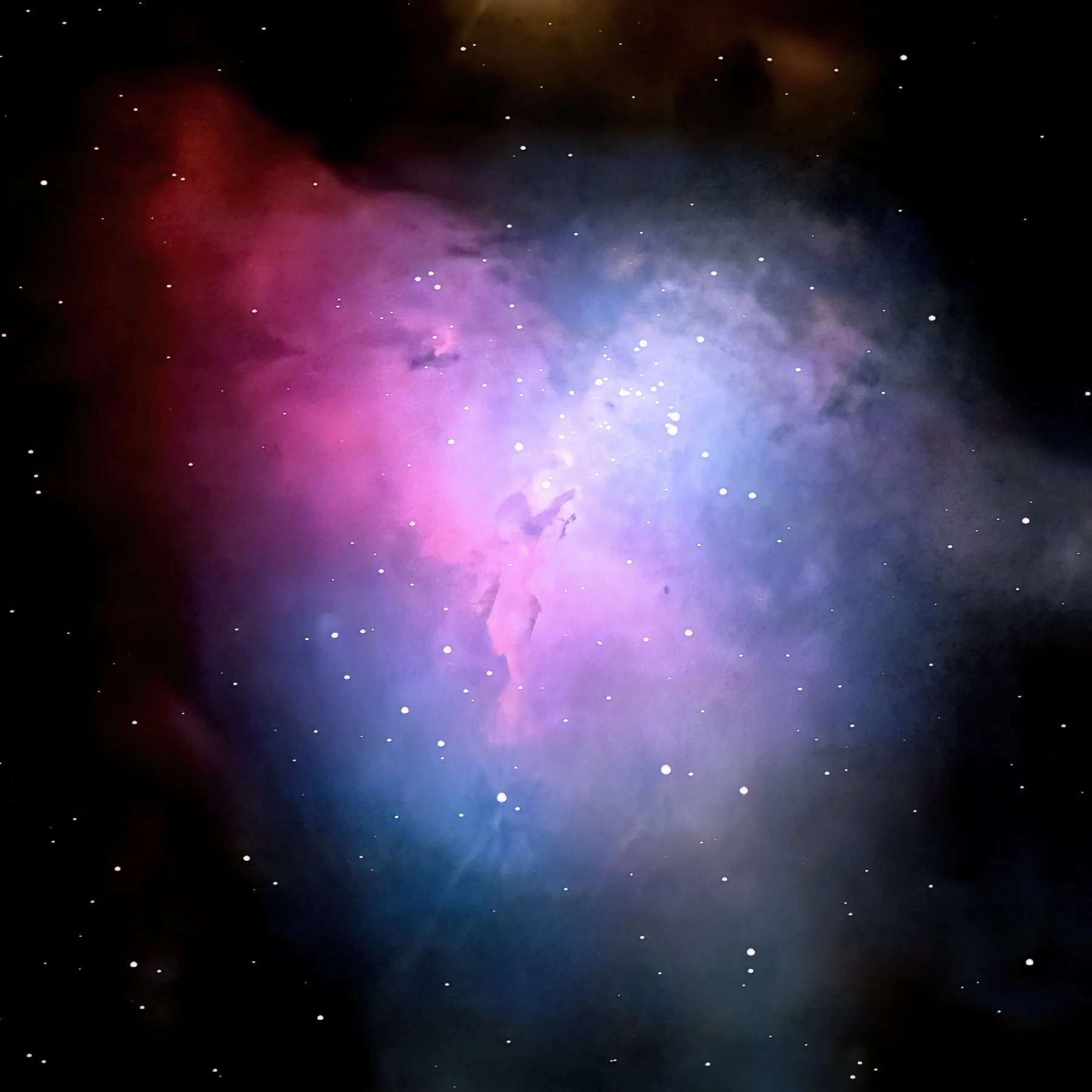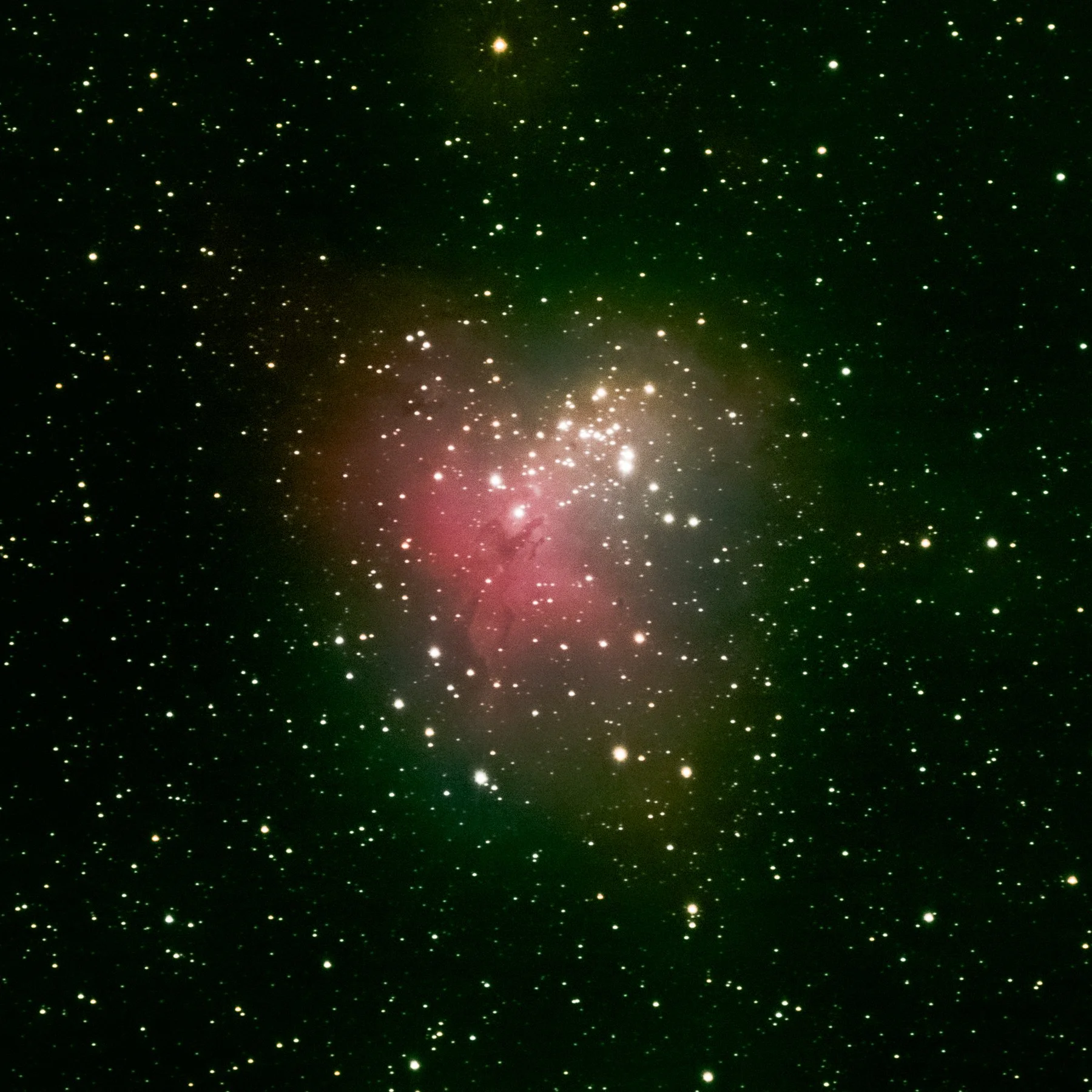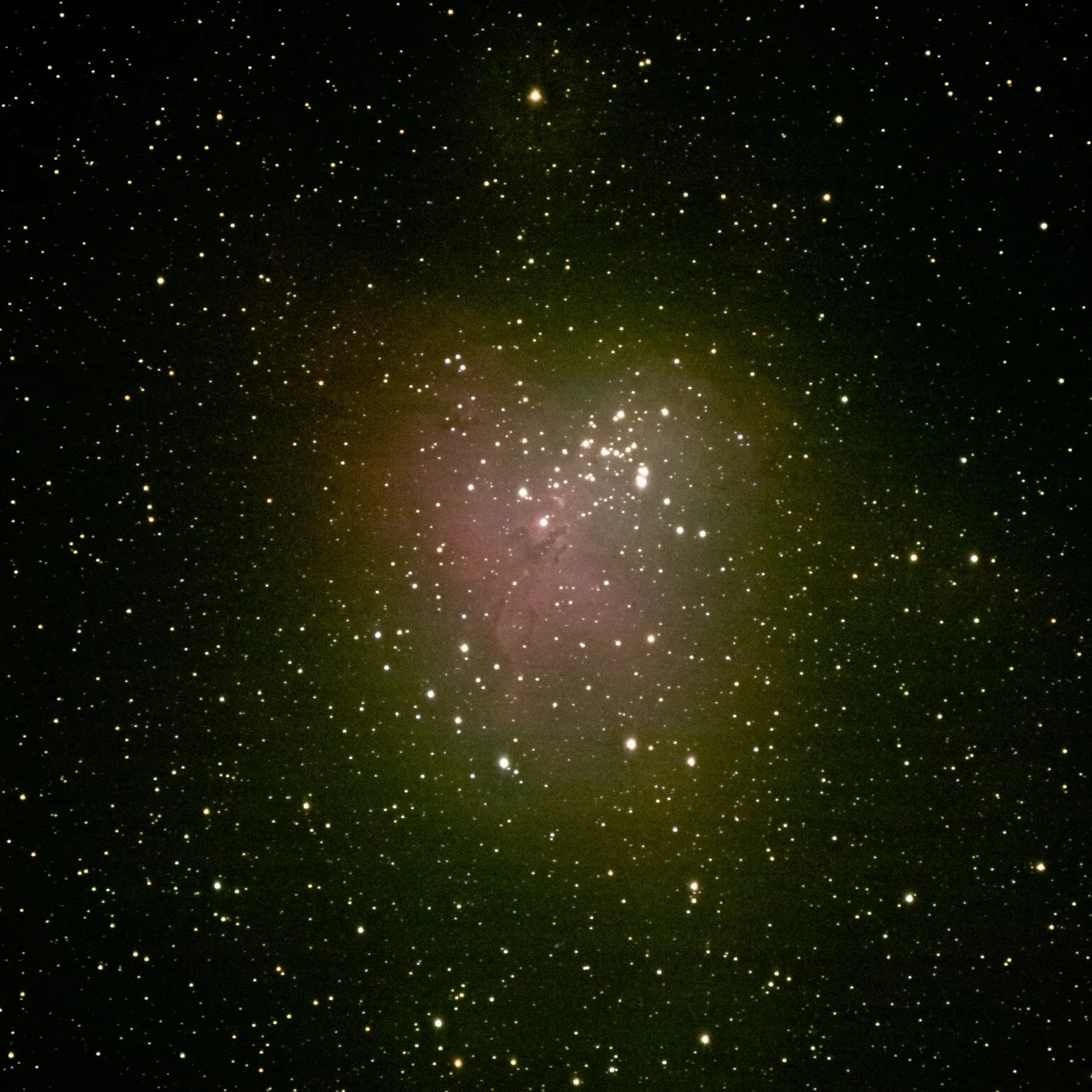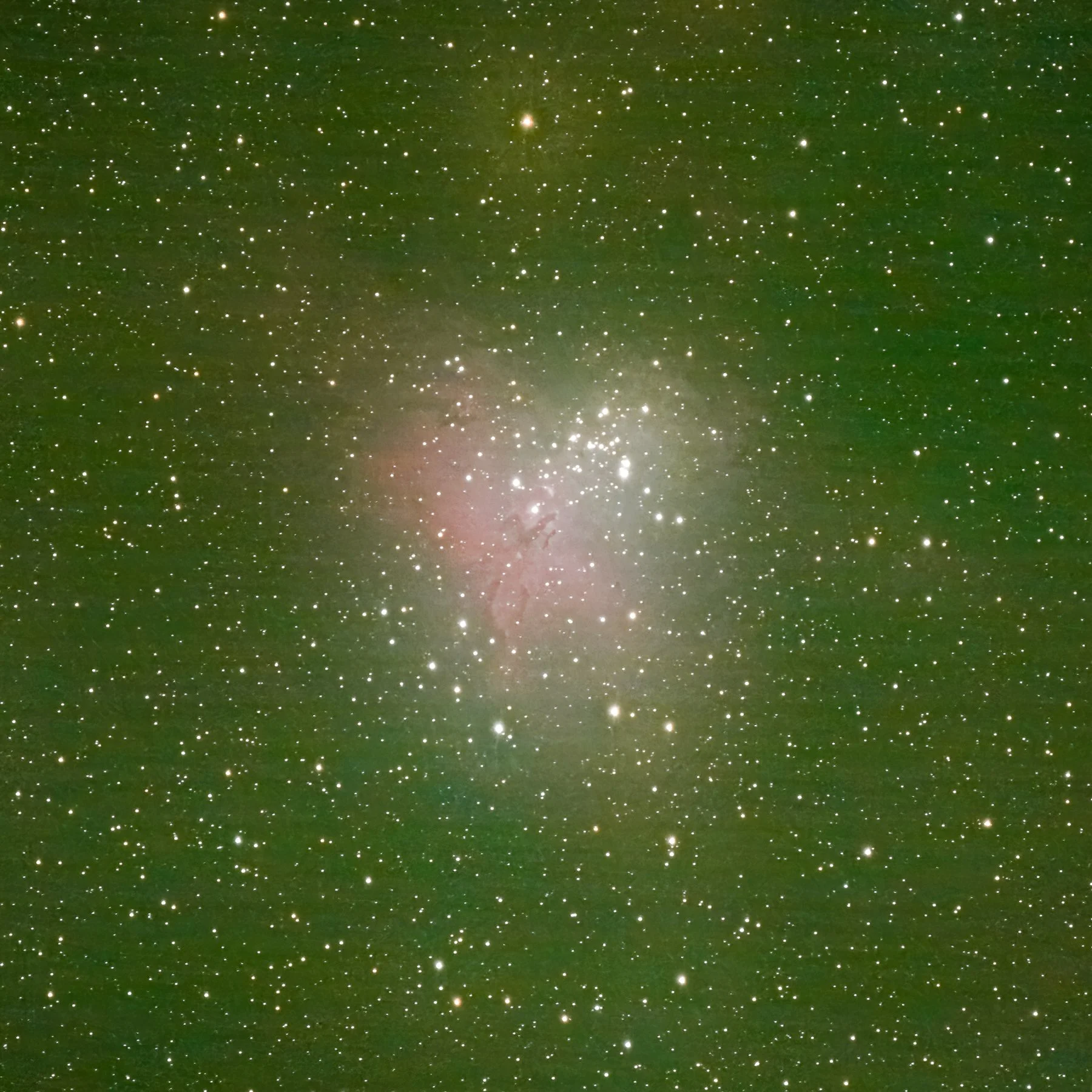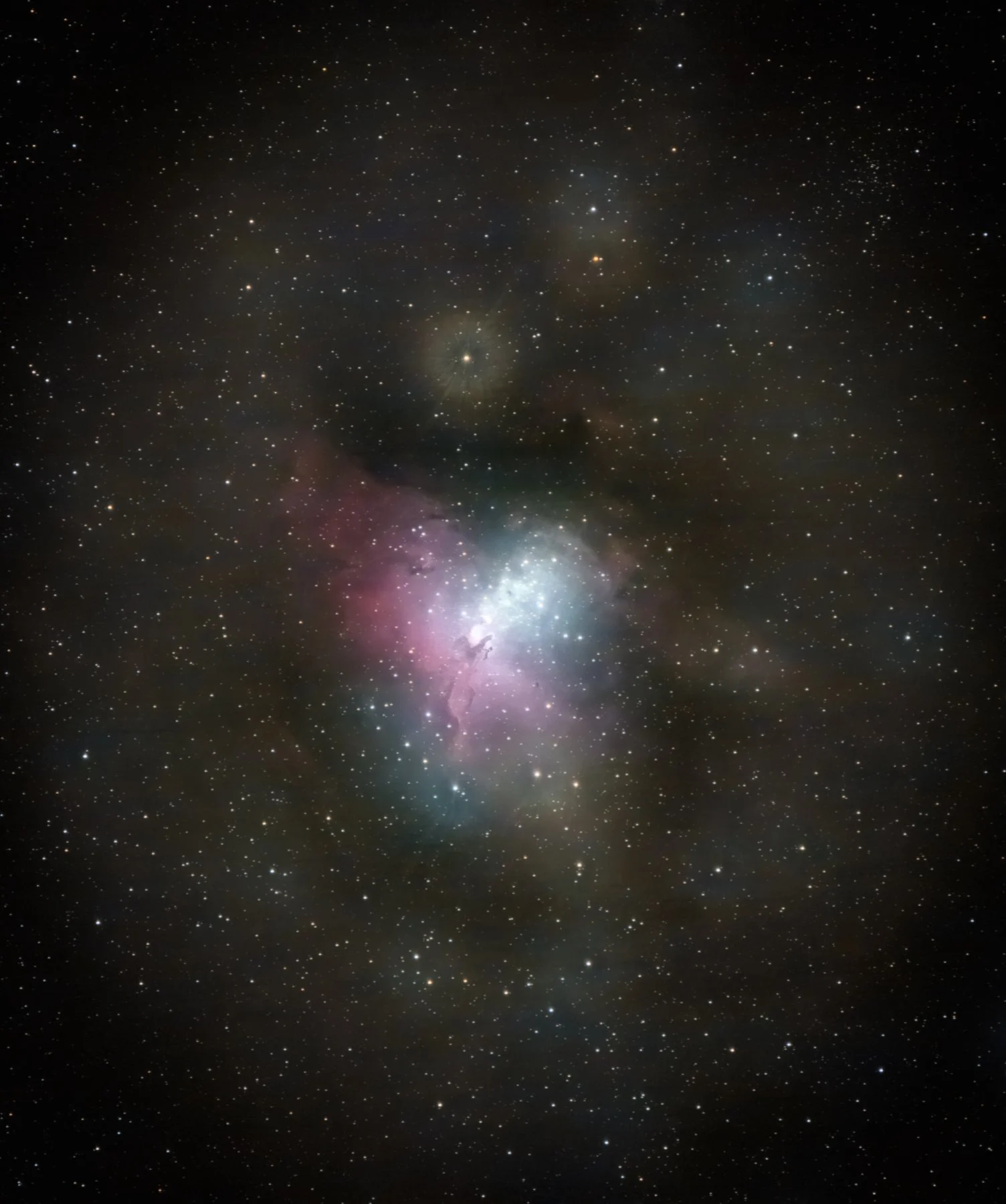M16 - Eagle Nebula
Type: Galactic Cluster / Emission Nebula
Discoverer: de Chéseaux, 1746
Size: 35 ly
Distance: 5600 ly
Constellation: Serpens
My Notes: I referenced this object several times in my M2 notes. M16 was a pivotal moment in improving my astrophotography. I tried photographing it with a setup I’d never tried before, a Nikon z8 full frame camera and the Nikkor 800mm f/6.3 lens on 8/2/2024. However, when I processed the 92 frames at 30 seconds (46 minutes of exposure), the results were really disheartening. A fellow astrophotographer from my astronomy club had just posted an amazing photo of this object showing detail I didn’t think was possible at our amateur level, and when I looked at what I had done with this new setup, it looked terrible. I edited it with Starry Sky Stacker for Mac, liked I’d done for all objects before this, but for some reason I got it in my mind that perhaps it was my photo editor causing the problem, so I tried editing it with Deep Sky Stacker instead. The results were slightly better, but still not meeting my expectations.
For this first try, I’d also put too much faith in the light that would come from stacking (and it being a full frame sensor with a larger front element lens) so I kept my ISO very low (ISO1250), to avoid noise. It was also a hazy atmosphere so I kept the exposures short (30 sec) to try and keep things sharp. It' had been over a year since I last imaged anything and forgot that you can make a lot of sensor noise go away with software and that I needn’t be afraid of ISO.
So, I went out again. 22:25 8/25/2024 - 00:40 8/26/2024. It was humid and hot, so I still kept my shutter short (25 sec), but ramped up the ISO to 3200. I again tried my usual method with Starry Sky Stacker, and then Deep Sky Stacker. It looked better, and I was hopeful that I’d gotten something comparibly good, but after I reviewed my colleague’s work again, I was still woefully outclassed. I decided I needed to try something else. Basic stacking with dark frames wasn’t doing it for me. After some internet searching, I discovered the free software called Siril. I watched a few tutorials on it and tried the process on this latest batch of 307 photos again. The results were much better for a first try. Using Siril also meant I had to use BIAS and Flat frames for the first time. They’re not complicated, but not anything I’ve ever needed to do before.
I rewatched a tutorial and tried again with a few of my own techniques and finally I got something that met the expectations I had for my setup. It’s still not at the level of my colleague, but I have a much better understanding of how my setup compares to his. I have a mirrorless camera with a photography lens at 800mm. He has a dedicated black and white astrophotography camera with different color filters and a telescope with more focal length and a wider aperture. Given all of that, I’m very pleased with the results.
One thing to note is that I have less exposure time with Starry Sky Stacker and Deep Sky Stacker. They threw away bad frames. Siril might be doing it too, but I can’t tell so I can only report how many images I put into it.
I was very focused on getting the Pillars of Creation. As kid, that was one of the most significant objects from Hubbel. We had posters of them in our elementary school classrooms. My edit actually makes it kind of hard to see the feature that gives this nebula its name, the Eagle. The eagle’s head is directly north of the pilars with its wings curving out to the left and right. Maybe in the future I’ll try to capture that feature, but for now I’m pleased with seeing the Pillars.
See a comparison of the various iterations below.
Messier Notes: (June 3rd, 1764) ‘A cluster of small stars enmeshed in a faint glow. In an inferior telescope it appears like a nebula.'
de Chéseaux: ‘A cluster of stars between the constellations of Serpens, Sagittarius and Antinous.’
Smyth: ‘A scattered but fine, large, stellar cluster. As the stars are disposed of numerous Paris among the more evanescent points of more minute components, it forms a pretty object in a telescope of moderate capacity.’
M16 Eagle Nebula - Edited in Siril - 307 frames at 25 sec (02:06:40 total exposure) ISO 3200 f/6.3 800mm - Nikon Z8 Nikkor 800 f/6.3 (8/25/2024)
M16 Eagle Nebula - Edited in Starry Sky Stacker - 215 frames at 25 sec (01:29:35 total exposure) ISO 3200 f/6.3 800mm - Nikon Z8 Nikkor 800 f/6.3 (8/25/2024)
Taken 08/02/2024. Edited with Starry Sky Stacker. I was very disappointed with the results as noted above.
Taken 08/02/24. Edited with Deep Sky Stacker. I tried this after the disappointing results with Starry Sky Stacker. I was still disappointed which led me to try photographing again on 08/25/24.
Larger view with a slightly different edit from Siril showing the surrounding stars. Has a slight crop applied from the full frame.

